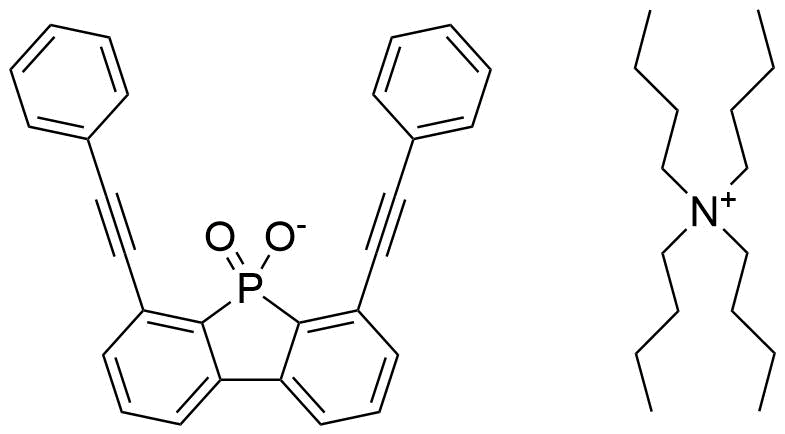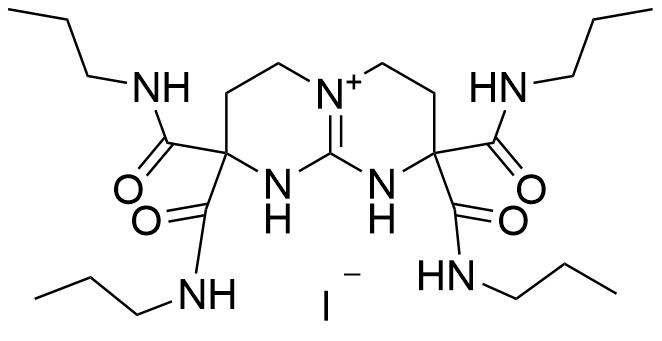Binding Properties
| 𝜈 | Molecule 1 : 1 Host | ||
| Ka = | 1.91⋅106 | M-1 | |
| Kd = | |||
| logKa = | |||
| T | 19.85 °C | ||
| Energy | kJ mol-1 | kcal mol-1 | |||
|---|---|---|---|---|---|
| ΔG | = | -35.13 | -8.4 | ||
| ΔH | = | -22.6 | -5.4 | ||
| -TΔS | = | -12.64 | -3.02 | ||
| J mol-1 K-1 | cal mol-1 K-1 | ||||
| ΔS | = | 43.1 | 10.3 | ||
These are the specifications of the determination of the experimental results.
| Detection Method: | Direct | ||
| Assay Type: | Direct Binding Assay | ||
| Technique: | Isothermal Titration Calorimetry | ||
| Molecule: | syringe | ||
| Partner: | syringe | ||
Detailed information about the solvation.
| Solvent System | Single Solvent |
| Solvent | acetonitrile |
Please find here information about the dataset this interaction is part of.
| Citation: |
V. D. Jadhav, F. P. Schmidtchen, SupraBank 2026, Surprises in the Design of Anion Receptors: Calorimetry Prevents False Reasoning (dataset). https://doi.org/10.34804/supra.2021092841 |
| Link: | https://doi.org/10.34804/supra.2021092841 |
| Export: | BibTex | RIS | EndNote |
Please find here information about the scholarly article describing the results derived from that data.
| Citation: |
V. D. Jadhav, F. P. Schmidtchen, Org. Lett. 2005, 7, 3311–3314. |
| Link: | https://doi.org/10.1021/ol051109k |
| Export: | BibTex | RIS | EndNote | |
Binding Isotherm Simulations
The plot depicts the binding isotherm simulation of a 1:1 interaction of Tetrabutylammonium 4,6-bis(phenylethynyl)-5-oxylato-5h-dibenzophosphole 5-oxide (1.0471204188481675e-05 M) and tetracarboxamide-bicyclic guanidinium iodide (0 — 2.094240837696335e-05 M).
Please sign in: customize the simulation by signing in to the SupraBank.




